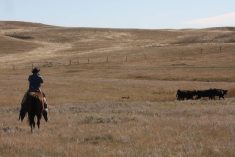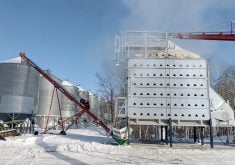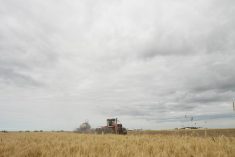A root-feeding moth could help prairie farmers control an invasive weed that has plagued them for years.
The oxeye daisy plant is not native to Canada, but is found in all western provinces, where it is categorized as a noxious weed.
It can affect the quality of grass seed crops, such as timothy hay.
Entomologist Rosemarie De Clerck-Floate, a research scientist based at Agriculture Canada’s Lethbridge research centre, has been researching methods to control the spread of oxeye daisy.
“It cannot be easily separated from timothy seed,” De Clerck-Floate said. “So that means that that seed is not pedigree any longer and can’t be sold.”
Read Also

Farmers asked to keep an eye out for space junk
Farmers and landowners east of Saskatoon are asked to watch for possible debris in their fields after the re-entry of a satellite in late September.
De Clerck-Floate is part of a project exploring biological weed control, in which researchers use insects to control invasive weed species.
For the oxeye daisy, they have found Dichrorampha aeratana moths that can minimize the spread.
Clerck-Floate said the larvae of the moth feeds on the root of the daisy, stunting the growth and reproduction of the plant.
“This moth has real potential… it’s easy to rear,” she said.
“So if it works, you know, that puts a smile on my face. Like I’m just so thrilled to be able to help producers.”
De Clerck-Floate said there are few other means of eliminating oxeye daisy.
“Nothing else is working, there aren’t any, to my knowledge, any highly effective chemicals that can be used,” she said. “And when you’re working in natural areas, you’re limited as to how you can apply and what you can apply. Like, these plants tend to like growing along waterways as well, where you can’t spray.”
While success isn’t guaranteed, De Clerck-Floate has high hopes.
“There are no guarantees, but we do our best in choosing something that could be effective. And in the end, it helps.”
Currently, all research data is being collected and will go to a panel of experts, which will then make a recommendation to regulators.


















